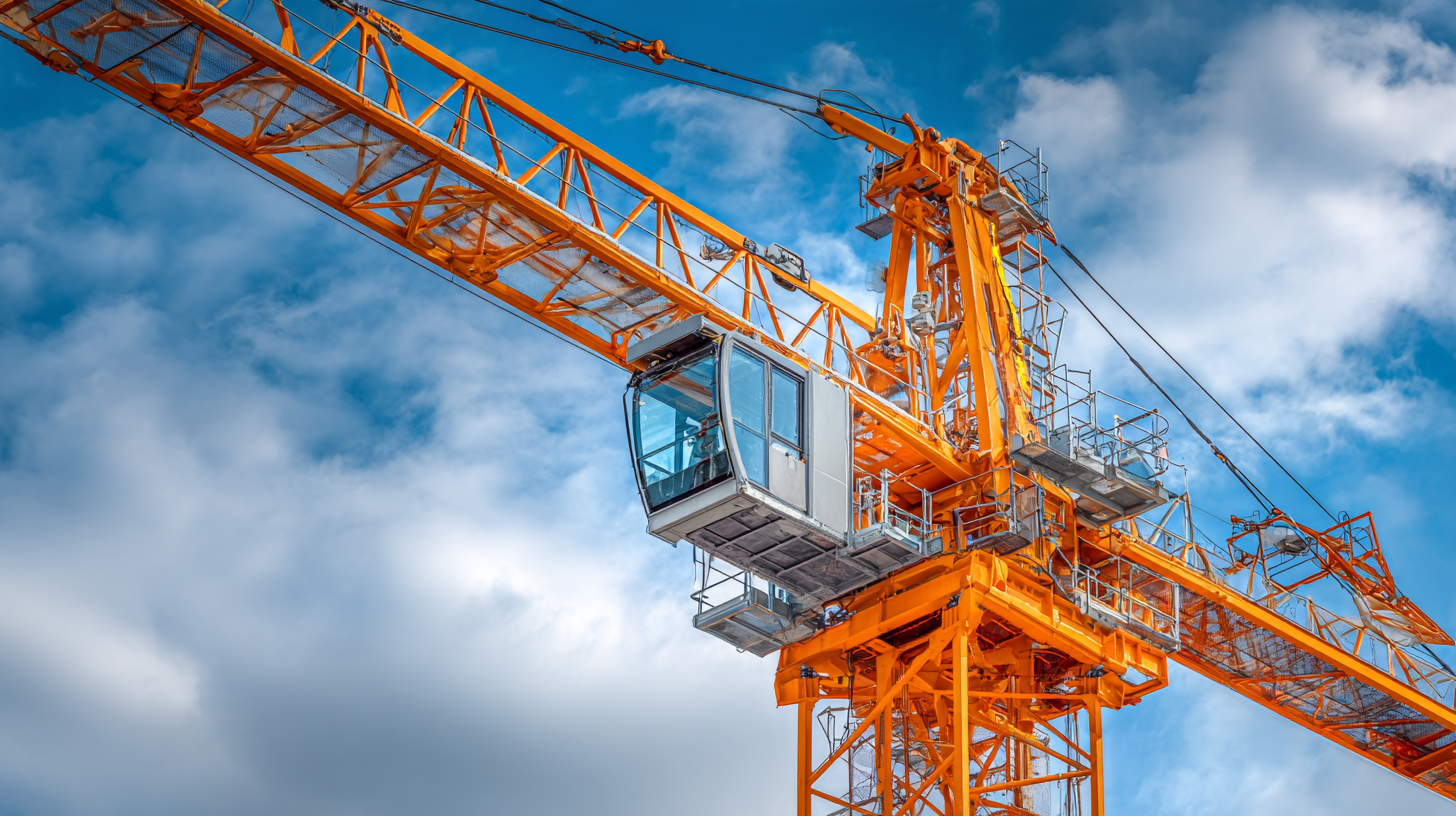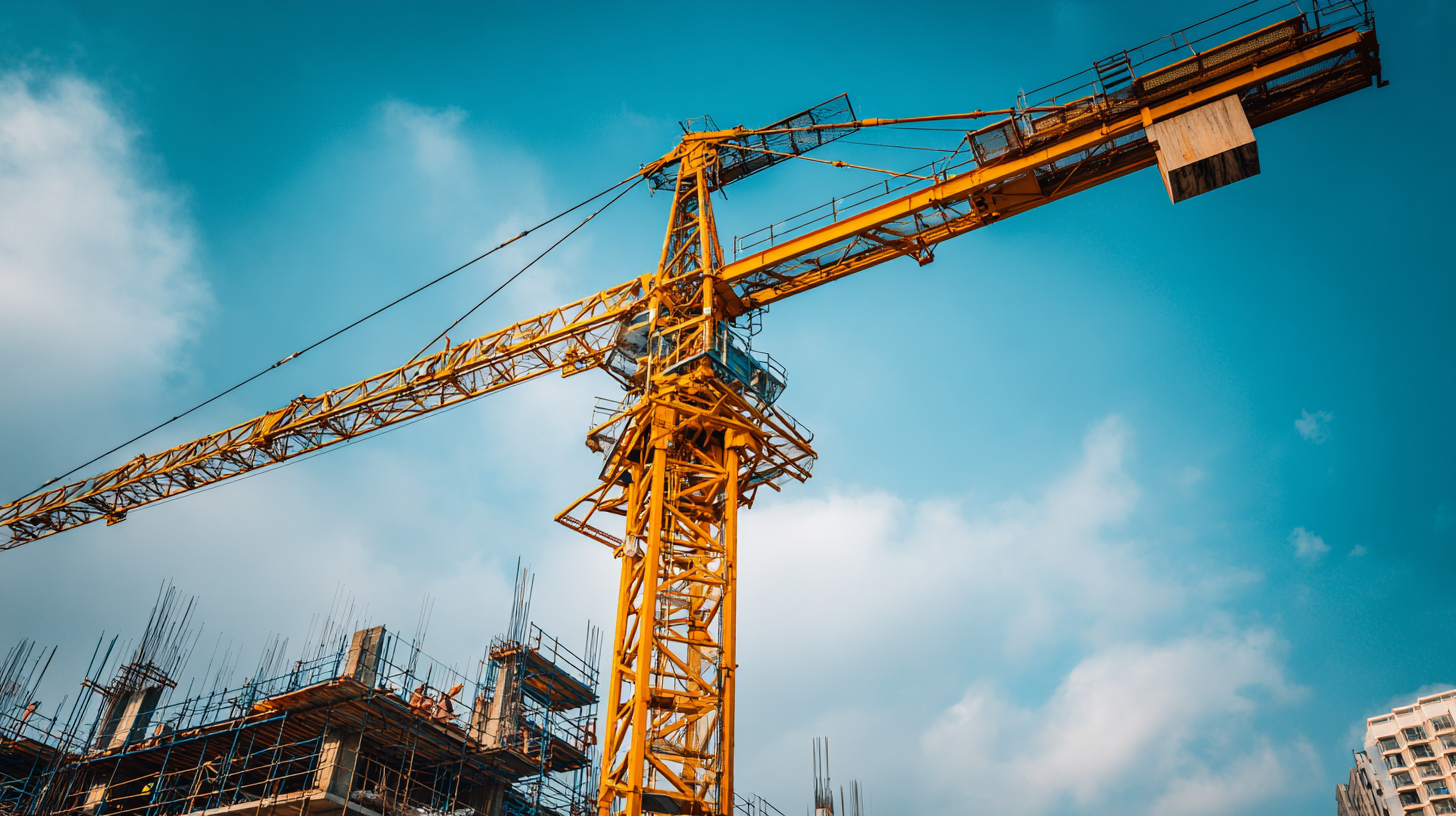In the rapidly evolving construction industry, selecting the appropriate equipment is crucial for ensuring project efficiency and safety. Among these, the Construction Crane stands out as a vital asset, enabling the movement and placement of heavy materials with precision. According to a report by Research and Markets, the global construction crane market was valued at approximately $9 billion in 2020 and is projected to reach over $12 billion by 2027, reflecting a compound annual growth rate (CAGR) of 4.6%. This growth highlights the increasing reliance on cranes to enhance productivity on construction sites, as they facilitate faster project completion and reduce labor costs. Therefore, understanding the various types of Construction Cranes and their specific benefits can empower project managers and contractors to make informed decisions that align with their project requirements and budget constraints.

When selecting a construction crane for your project, understanding the different types and their specific applications is crucial. There are several types of cranes, including tower cranes, mobile cranes, and crawler cranes. Tower cranes are ideal for high-rise construction due to their impressive height and lifting capacity, while mobile cranes offer flexibility and quick setup, making them perfect for smaller urban projects where maneuverability is key. Crawler cranes, on the other hand, excel in rough terrain, providing stability and heavy lifting capabilities.
Tips: Before making a decision, assess your project’s requirements in terms of weight capacity, reach, and site conditions. Additionally, consider the frequency and duration of use; renting may be more economical for short-term projects. It’s also essential to check local regulations and ensure compliance with safety standards, which can vary by region.
Choosing the right crane is not just about the equipment itself, but also about the operator's expertise. A skilled operator can significantly enhance your project’s efficiency and safety. When selecting a crane, always inquire about the operator’s certifications and experience to ensure optimal performance on site.
When selecting a crane for your construction project, it’s crucial to consider several key factors to ensure that you choose the most suitable option for your specific needs. One of the primary considerations is the type of crane that aligns with the project requirements, which include the height, weight capacity, and space constraints on-site.
Tower cranes, for instance, are ideal for high-rise buildings due to their lifting capabilities, while mobile cranes may be more appropriate for projects requiring flexibility and quick relocation.

Additionally, crane safety operations must be a top priority, especially in complex environments such as Modular Integrated Construction (MiC). The integration of safety features and operational protocols can mitigate the risks associated with crane lifting operations. New innovations, like automation technology and user-friendly interfaces, enhance the operational efficiency and safety of cranes, making it easier for operators to monitor and manage lifting tasks in real time.
Research into crane selection processes further suggests that systematic reviews can help identify best practices and future needs in this evolving field, ensuring that your project benefits from the latest advancements in crane technology and safety measures.
As the construction industry continues to evolve, several market trends are influencing the future of construction cranes, shaping their design, functionality, and deployment by 2025. One significant trend is the increasing demand for automation and smart technology in construction equipment. Innovations such as remote-controlled cranes and integrated data analytics are enhancing operational efficiency while reducing labor costs and the risk of accidents on-site. The integration of IoT (Internet of Things) technologies into cranes allows for real-time monitoring and predictive maintenance, ensuring equipment reliability and safety.
Another crucial factor reshaping the crane market is the push for sustainability and environmental responsibility. Builders are increasingly seeking eco-friendly solutions, prompting manufacturers to develop cranes that consume less energy and utilize sustainable materials. Electric and hybrid models are gaining popularity as they align with global sustainability goals, reducing carbon footprints while meeting the energy demands of modern construction projects. With the construction industry ramping up its efforts towards greener practices, the advancement of such environmentally conscious cranes is expected to accelerate significantly by 2025, aligning with broader industry objectives of reducing the environmental impact.
| Crane Type | Max Load Capacity (ton) | Typical Height (m) | Operating Radius (m) | Market Trend by 2025 |
|---|---|---|---|---|
| Tower Crane | 10-60 | 30-100 | 30-80 | Increased demand for high-rise buildings |
| Mobile Crane | 5-100 | 10-40 | 20-50 | Rise in infrastructure projects |
| Crawler Crane | 30-600 | 20-50 | 30-60 | Growing use in heavy lifting operations |
| Rough Terrain Crane | 10-50 | 10-25 | 12-30 | Increase in construction in remote areas |
| Luffing Jib Crane | 10-50 | 30-60 | 20-40 | Demand due to space optimization in urban areas |
In today's fast-evolving construction landscape, innovations in crane technology are crucial for enhancing project efficiency. The tower crane rental market is seeing significant growth, projected to reach USD 22.1 billion by 2030. This growth reflects a shift toward more advanced and efficient machinery that not only completes tasks faster but also does so with reduced environmental impact. Heavy lift cranes are incorporating sustainable features, addressing the industry's growing demand for renewable solutions.

When selecting the best crane for your project, consider the following tips: First, assess the specific needs of your project, including the height and weight requirements. Choosing a crane with appropriate lifting capacity can minimize delays and increase productivity. Second, stay informed about the latest technologies such as electric and hybrid cranes, which can significantly reduce carbon emissions. Finally, always prioritize safety features—cranes equipped with advanced sensors and automation can help prevent accidents and ensure a safer work environment.
As the construction industry continues to embrace these technological advancements, the impact on project efficiency will only grow stronger, paving the way for a more sustainable future.
When embarking on a construction project, one of the key decisions contractors face is whether to rent or purchase cranes. Evaluating the cost-effectiveness of each option is crucial for optimizing project budgets and timelines. The recent growth of the UK construction equipment rental market highlights a significant trend towards rental solutions, with the market valued at approximately 5.23 billion USD in 2023 and projected to increase in the coming years. This growth can be attributed to the flexibility that rental options provide, allowing companies to avoid the substantial capital expenditure associated with purchasing.
In addition to financial considerations, renting cranes can offer operational advantages. With rental agreements, contractors can access the latest technology and models without the long-term commitment of a purchase. This not only ensures they have the most efficient equipment for their projects but also minimizes maintenance responsibilities and related costs. As the construction landscape continues to evolve, assessing whether to rent or buy cranes will play a pivotal role in the planning stages, directly impacting project success and profitability.


